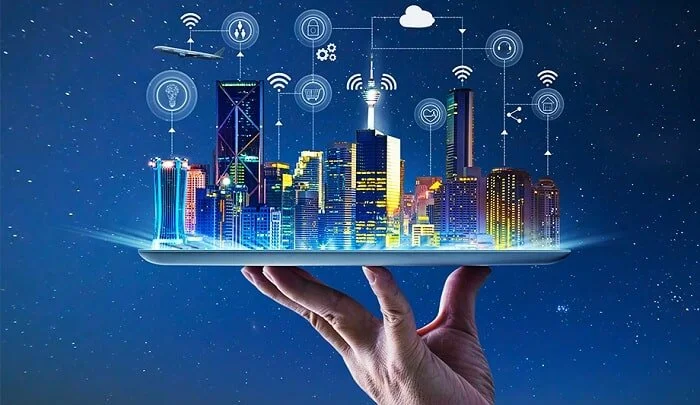How to Stop Smart Buildings from Becoming Hackers’ Playgrounds
BY JOHN MEKO
Smart technologies have transformed the way we live, work and communicate—we've become accustomed to a highly tech-enabled lifestyle and we now expect this to be present in our professional lives, too. Such technologies have the ability to make our workspaces more productive with automatic visitor check-in, healthier with improved air quality monitoring, and more sustainable with intelligent energy and water tracking. And when implemented properly, smart technologies enable landlords and building managers to make buildings smarter by using more advanced systems, such as access control, fire alarm and compliance management.
However, security does not end with fire safety and traditional barriers to the outside world. Cyber criminals have become a real threat, invading everything from nanny cameras to refrigerators. Either of those items—and virtually any other Internet of Things (IoT) device—may serve as a conduit to breach an entire network. This is such a concern that, reportedly, President Joe Biden's Peloton will not be allowed to enter the White House for fear of a security breach.
Yet, as people return to their physical workplaces, they'll want to come back to tech-savvy environments. Research shows that 80 percent of employees want to work in a technologically advanced office, so a tech-enabled environment isn't just a nice-to-have for the working world—it's essential. In order to create environments that are safe, secure and free of cyber threats that could compromise users' privacy or their security, landlords need to establish the right protocols and standards in their buildings to empower tenants to have safer environments for their users and their data.
The Smarter the Building, the Larger the Attack Surface
Smart and connected are often used interchangeably, but there is an important differentiator. While any aspect of a building could be "connected"—lights, plumbing, heating and cooling, access control, to name a few—they are not necessarily "smart." A truly smart environment is one which is seamlessly integrated and is purpose-built with security in mind from day one, minimizing the risk of potential threats.
Smart Buildings Must Be Led By the Right Protocols and Standards
Cybersecurity cannot be obtained without first establishing the necessary policies, practices and testing processes that ensure the building's systems and data are secure. Those policies must then be adhered to, in order to ensure that security is maintained. This encompasses not just the approach to securing the networks, but ensuring the users of the building are aware of cyber best practices and regularly follow standard procedures.
These can range from something as simple as ensuring that the computers used for monitoring building-management systems aren't also used for sending emails, or as complex as segmenting networks based on vendor usage. In doing so, landlords can minimize the risks and the potential consequences of a system failure, whether in error or through deliberate action from a malicious hacker outside of the system.
Strong Security Measures Protect Data, Too
Smart buildings contain a treasure trove of data that can be used to learn more about how the space is being used, how much energy is required, and how the space can be customized to better-suit employee needs. Given that every smart asset produces vast amounts of data, organizations need to be able to securely collect, analyze and make smart use of it without compromising security. This means having strong data-governance frameworks and physical protection of the data networks.
The Office of Tomorrow Needs to Be Smarter and More Secure
Smart buildings—those that deliver outstanding outcomes for all users, through digital technology, to exceed their evolving expectations—are expected to provide the highest levels of security. With the right technology at their fingertips, landlords can equip their offices for the modern, tech-loving workforce that has grown accustomed to the benefits of working in a home environment. Using technology as a new incentive to bring the workforce back to the office requires proper thought to go into implementing state-of-the-art technology without compromising on digital or personal safety.

